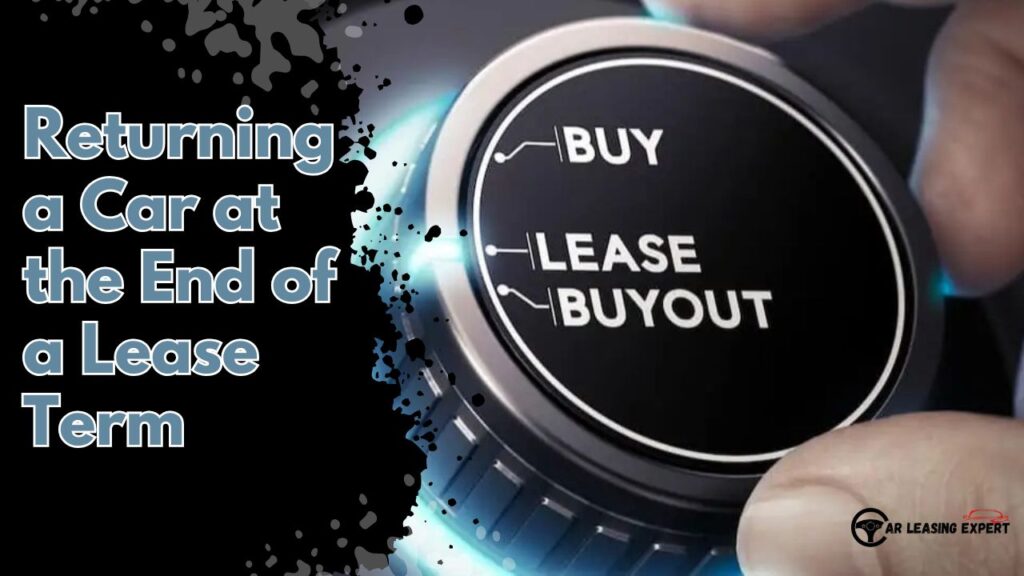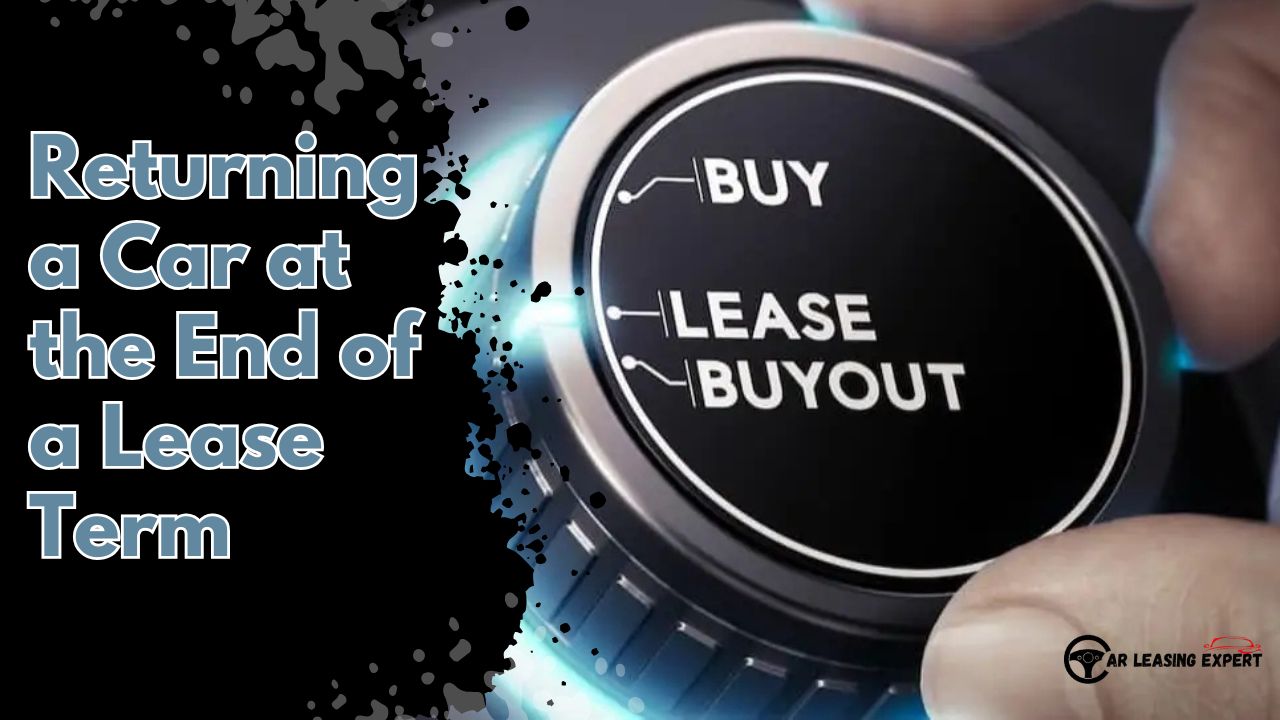Returning a lease car at the end of a lease term can be a simple process if you understand the steps involved and prepare appropriately. Once the rental period ends, you may be wondering what happens when you return a rental car.
If you decide to return your rental car, you may be liable for excessive wear and tear or damage that occurred during the rental period. Additionally, you may be required to pay for exceeding the mileage limit and a disposition fee, if applicable. It is important to keep these things in mind throughout the course of the rental period to avoid potentially significant charges at the end.
Returning a Car at the End of a Lease Term
Here’s a comprehensive guide to help you navigate the end-of-lease return process:

1. Review your lease
Understand the terms: Start by reviewing your lease agreement to understand the terms and conditions. Pay attention to mileage limits, wear guidelines, and fees associated with the return.
Check obligations: Make sure you know what obligations you need to meet before returning the car, such as scheduled maintenance or repairs.
2. Schedule a pre-return inspection
Inspection appointment: Contact your leasing company to schedule a pre-return inspection. This inspection will assess the condition of the vehicle and identify any damage or issues that need to be addressed.
Inspection report: Review the inspection report carefully. If there is damage or excessive wear, consider repairing it before returning the car to avoid additional fees.
3. Address repairs and maintenance
Repairs: Make any necessary repairs identified during the inspection. Use reputable repair shops to ensure quality work.
Maintenance: Perform any outstanding maintenance tasks, such as oil changes, tire rotations, and fluid checks, as required by the lease.
4. Clean and prepare the car
Exterior cleaning: Wash the exterior of the car and consider having it professionally cleaned to make a good impression during the return process.
Interior cleaning: Clean the interior thoroughly, removing personal items, vacuuming carpets, and wiping down surfaces.
5. Gather necessary documents
Lease agreement: Bring a copy of your lease agreement for reference.
Inspection report: Have the pre-return inspection report on hand.
Service records: Gather all service and maintenance records to provide proof of compliance with the terms of the lease.
Keys and accessories: Be sure to return all keys, key fobs, and any accessories that came with the car, such as floor mats and owner’s manuals.
6. Return the car to the dealer
Scheduled appointment: Schedule an appointment with the dealer to return the car. Arriving on time helps expedite the process.
Final inspection: The dealer will perform a final inspection to check the condition of the car. Be sure to get a copy of the inspection report for your records.
7. Settle outstanding charges
Excess mileage: If you have exceeded the mileage limit, be prepared to pay excess charges. These are usually assessed per mile over the limit.
Wear and tear: Address any additional charges for excessive wear and tear that have not been repaired prior to return.
Disposition fee: Some leases include a disposition fee for returning the car at the end of the lease period. Confirm this fee and be prepared to pay it.
8. Explore your options
Lease a new car: If you enjoyed your lease and want to continue, explore options for leasing a new car with updated features and technology.
Buy the leased car: Some leases offer a purchase option, allowing you to buy the car at the end of the lease period. Evaluate the purchase price and consider financing options if you choose this option.
Return the vehicle and let it go: If you decide not to lease or buy another car, you can simply return the leased car and let it go, as long as you have paid all fees and obligations.
Related Post: Will My Credit Score Go Down After I Turn In a Leased Car?
End Of Lease Options
Leasing a car offers many benefits, including the flexibility you have when the lease ends. Whether you’re planning to return the car, upgrade to a new one, or explore other options, there are a few important things to consider before making your decision.
Here’s a list of your main lease-end options:
Return The Car
If you decide to return your vehicle and not buy it, you must take it to the dealer where you rented it. They will go through a checklist for any excessive wear and tear, which could result in charges.
Buy It
You have the option to buy your vehicle if you want to – and not just at the end of the lease! Most dealers allow you to buy your car during your lease. So, if you are interested in buying your vehicle, make sure that is an option in your contract before you sign any agreement.
Extend Your Lease
Contact your leasing office to find out about lease extension options if you want to keep your car for a little longer.
Take Advantage of a Lease-to-Own Option
If you have positive equity in your leased car, you may be able to use that trade-in value to buy a new or used car or get a new lease.
You don’t have to wait until your lease is up to explore or pursue these options. However, regardless of which route you choose, there are a few more things you’ll need to know when you’re ready to return or end your Volkswagen lease.
Read Also: Leasing a Car VS Buying a Car
Common Things to Check During the Lease Return Process
Excess Mileage Charges
Your lease agreement should include mileage parameters. If you add more than the amount of mileage outlined in your lease agreement, you may accrue some excess mileage charges when you return your rental vehicle.
Wear and Tear Charges
This can include dents, scratches, and other exterior and interior damage that may occur during your lease.
Modification Charges
You may be charged by the lessee if you modify your rental vehicle, such as adding tint, aftermarket equipment, or permanent accessories.
Maintenance and Repairs
To find out what maintenance and repairs you are required to perform during your lease, check your lease agreement and make sure those items are taken care of before the lease ends or you turn in your Volkswagen vehicle.
Excessively Low or Empty Gas Tank
If you return your rental vehicle with an empty or low gas tank, you may be charged an additional fuel charge. Therefore, it is recommended to have at least a half tank, if not more, when you return your vehicle.
Final Thoughts
Returning a car at the end of a lease involves a few steps, such as reviewing your lease agreement, scheduling a pre-return inspection, handling any needed repairs, cleaning the car, and gathering the required documents. Following these steps can make the process easy and stress-free. Whether you decide to lease a new car, buy the one you’ve been driving, or simply return it, knowing the process will help you make the best choice.
FAQs
Do you get your money back when you return a rental car?
In most cases, you don’t get your money back when you return a rental car. However, if you have made security deposits or overpaid on your rental agreement, you may be entitled to a refund of those amounts. Some rental agreements may also include equity if the market value of the vehicle exceeds the residual value, but this is less common.
Do you have to return a rental car to the same dealer?
You are usually required to return the rental car to the same dealer or dealer network of the same brand that you rented it from. Confirm with your rental company if they allow returns to a different dealer within their network.




